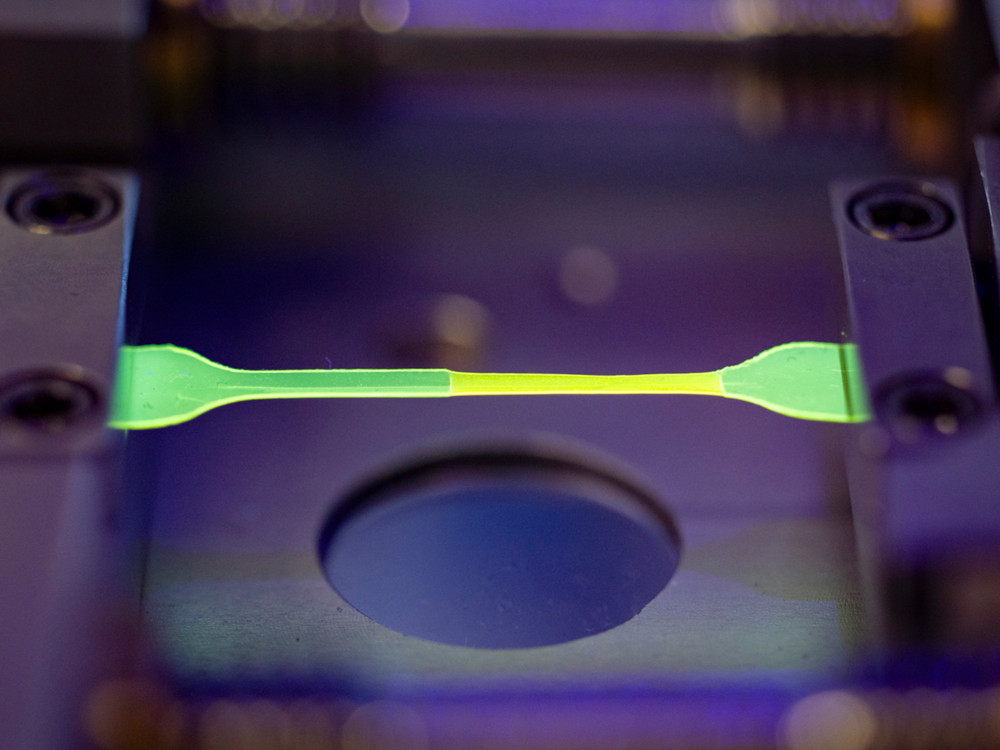
08 Nov Measuring forces in plastics optically
Researchers in polymer chemistry at Chemnitz University of Technology have developed a dye molecule that indicates a force acting within a plastic by changing color. These so-called mechanophores are not new, but were usually only able to indicate the presence or absence of stresses in plastics. Now, component stresses become visible through color changes depending on their strength. If the force on the plastic decreases, the dye molecules return to their original state. This is why these dyes are also known as molecular springs – they stretch and then spring back to their original state.
Calibration of molecular torsion springs
In the current research work, this concept is being further developed through the experimental calibration of forces. This allows the magnitude of forces in various plastics to be determined optically. “The step from mere visualization and theoretically calculated forces in plastics to experimentally directly determined forces is a big one,” explains Prof. Michael Sommer, holder of the Chair of Polymer Chemistry. According to the researcher, this was made possible by the use of differently functioning mechanophores, whose behavior under certain mechanical stresses can be compared with each other. In this way, molecular forces could be determined. According to the researchers, tensile forces in particular have been investigated to date. The extent to which external compressive forces, for example, can also be determined reliably and quantitatively still needs to be researched.

Raphael Hertel, research assistant at the Chair of Polymer Chemistry, carries out a tensile strain measurement on a sample in the laboratory. Image: Jacob Müller
Possible application in 3D printing
The results should also form a basis for an even better fundamental understanding of forces in polymer materials. In further experiments, which are being carried out as part of a recently funded DFG project together with the working groups of Professor Günter Reiter (polymer physics) and Priv.-Doz. Michael Walter (Theory) at the University of Freiburg, microscopic force distributions in various plastics will be investigated and 3D-printed components will also be used. “The visualization of time- and spatially-resolved force distributions can currently only be modelled theoretically,” says Sommer. “The use of torsion springs offers unique opportunities for microscopic insights that could revolutionize aging and damage analysis.”
Original publication:
[Raphael Hertel, Maximilian Raisch, Michael Walter, Günter Reiter, Michael Sommer: Mechanistically Different Mechanochromophores Enable Calibration and Validation of Molecular Forces in Glassy Polymers and Elastomeric Networks, Angewandte Chemie International Edition, e202409369, DOI: https://doi.org/10.1002/anie.202409369]
Source: www.tu-chemnitz.de
Image: Jacob Müller






